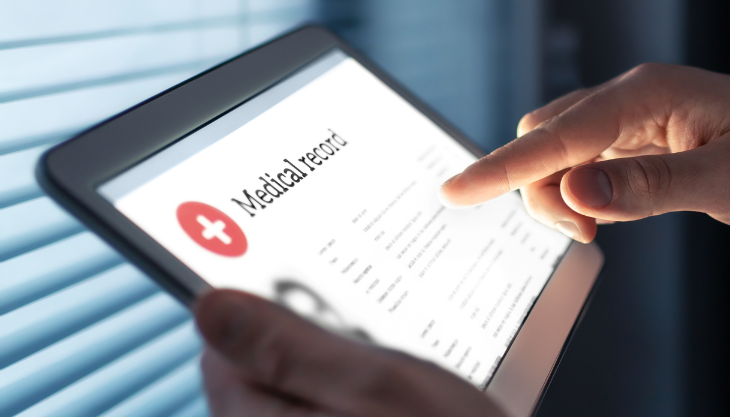What is HL7 FHIR API and How Does It Improve Interoperability?
Posted by Jamicah Chan
Effective patient treatment goes beyond assessing a list of symptoms. Providers need access to patient histories, lab reports, and related health records to understand the full picture and provide comprehensive care.
The ability to quickly and securely access such patient information means the difference between providing accurate, timely care and the risk of misdiagnosis. This is where data interoperability in health information exchange becomes a crucial tool in a provider's kit.
To help providers across the country get their hands on the correct information, Health 7 International developed the Fast Healthcare Interoperability Resource (FHIR), standardizing the framework to simplify access to data much as any search engine.
But with the technology available, how can we integrate FHIR interoperability into clinical routines?
Unlocking the full potential of FHIR interoperability isn't just about using these tools; it's about harnessing their power. Learning how to integrate FHIR fully transforms your operations and ensures superior clinical and business results.
Read More: What is Interoperability in Healthcare & How Will It Help My Practice?
HL7, API, FHIR Interoperability Explained

Digital data repositories rely on interoperability to facilitate data sharing across different systems and platforms. But to achieve seamless, ethical, and efficient data exchange, the Office of the National Coordinator for Health Information Technology (ONC) introduced FHIR to standardize and create a uniform structure for all healthcare data.
It organizes information into resources, such as patient records, medications, and diagnoses, with clear data formats and relationships. It ensures that data is structured consistently, making it easier for different systems to understand and use.
Meanwhile, Health Level 7 (HL7) outlines data exchange standards. HL7 offers comprehensive standards for healthcare data exchange. While FHIR is the newer and more flexible standard, HL7 provides a broader framework for healthcare communication.
HL7 encompasses various standards, including FHIR, and helps ensure that healthcare systems can understand each other's data regardless of how it is stored.
Lastly, Application Programming Interfaces (APIs) enable communication. APIs serve as the bridge between different healthcare systems and applications. They define how data can be requested, retrieved, and updated.
APIs facilitate real-time communication and exchange between healthcare systems, such as electronic health records (EHRs), laboratory systems, and patient portals.
Developers use APIs to connect their applications with healthcare systems, ensuring seamless data flow.
FHIR API Systems at Work

Getting the information you need in just a few clicks is one of the many benefits of FHIR. Here are 5 more ways FHIR interoperability improves care journeys for providers and patients.
Connecting Laboratory Systems
When you order lab tests for a patient, you want those results back pronto. FHIR APIs facilitate this by connecting your clinic's systems with the lab’s.
It's like a direct line for sharing test requests and results. This speeds up diagnosis and treatment planning. No more waiting for faxed reports or playing phone tag with the lab.
Patient Portals for Engagement
Many clinics offer patient portals where patients access their health records, book appointments, and communicate with providers. FHIR APIs make these portals even more powerful.
Patients can securely view their data from multiple sources, including past hospital visits, recent check-ups, and prescriptions. This transparency boosts patient engagement and empowers them to take charge of their health.
Read More: 4 Reasons Patient Portals are a Healthcare Win-Win
Interoperability with Other Providers
Often, patients receive care from multiple providers. FHIR APIs help clinics share crucial data with specialists, pharmacies, or emergency departments. So when your patient sees a specialist, their medical history, medications, and allergies travel with them.
It's like creating a unified healthcare network that ensures everyone has the correct information for delivering the best care.
Innovative Apps and Tools
Clinics increasingly use FHIR APIs to connect with innovative healthcare apps and tools. These could be remote monitoring apps, telehealth platforms, or handy devices.
By plugging into these apps via FHIR APIs, clinics can access real-time patient data for remote patient monitoring, early intervention, and preventive care.
Read More: 3 Proven Benefits of Having a Mobile EHR
Billing and Insurance Claims
Finally, when it's time to settle the bills, the clinic uses the HL7 FHIR API to transmit the billing information to your insurance company. This helps accelerate claims processing and reduces administrative hassles.
Maximize Interoperability with Integrated Software Solutions

FHIR interoperability is redefining data's role in elevating the quality of care and enhancing patient experiences. Imagine having the reassurance of up-to-date, HL7-standard interoperability to match every patient case.
Meditab's Intelligent Medical Software (IMS) FHIR API integration gives you this advantage. IMS enables you to access, send, and receive crucial patient information across multiple platforms, all while providing you with practice management and medical billing tools. Paired with reliable front and back office support, IMS covers every area of your practice.
With its cutting-edge features, user-friendly interface, and advanced mobile capabilities, IMS caters to your practice's needs, from clinical operations, administrative tasks, billing, patient engagement, and even marketing efforts. Embrace the future of healthcare with IMS by your side.
Share this post: on Twitter on Facebook on Google+


